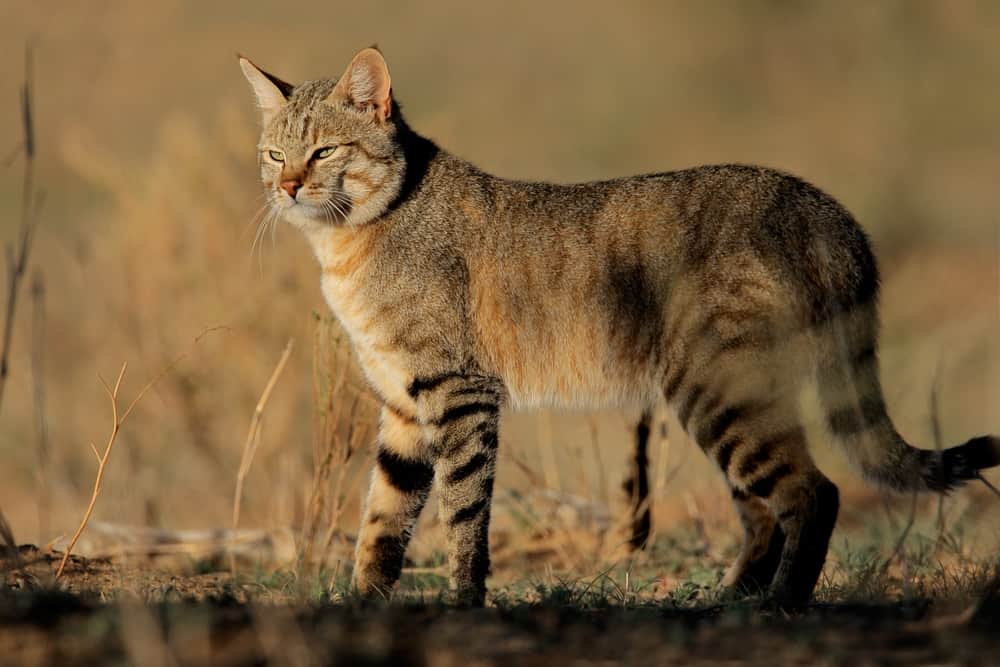Our expert-vetted content is grounded in current scientific publications, yet we acknowledge science’s ever-evolving nature. Read our full editorial and disclosure policy.
Introduction
Did you know the estimated population of domesticated cats on Earth is 600 million. The origin of domesticated cats (Felis catus) is a tale that spans thousands of years, connecting our modern-day house cats to their wild ancestors.
Cats’ role in human life shifted from uninvited pest-control specialists to cherished companions, with their domestication story being a fascinating blend of science, history, and culture.
Watch the whole story about the Origin of Cats in our expert interview here:
Key Points
- The domestic cat population globally is estimated at around 600 million.
- Cats’ domestication was a natural process, unlike other domesticated animals.
- Cats started living with humans to hunt surplus grain-attracting rodents.
- A mutual survival benefit drove this proto-domestication process.
- Initially, full cat domestication likely occurred in ancient Egypt around 3500 years ago.
- Recent evidence shows early human-cat interaction evidence dates back to Cyprus, around 7500 BC (or 9500 years ago).
- Cats spread globally as ship-borne rodent controllers, leading to breed diversification.
- Despite domestication, domestic cats retain a high degree of wild traits.
Did cats domesticate us?
Cats are unique among domesticated animals because humans did not intentionally tame them. Instead, cats’ domestication is believed to have been a natural process. They are thought to have domesticated themselves, which set their domestication journey apart from that of dogs, horses, and other animals that humans purposefully domesticated.
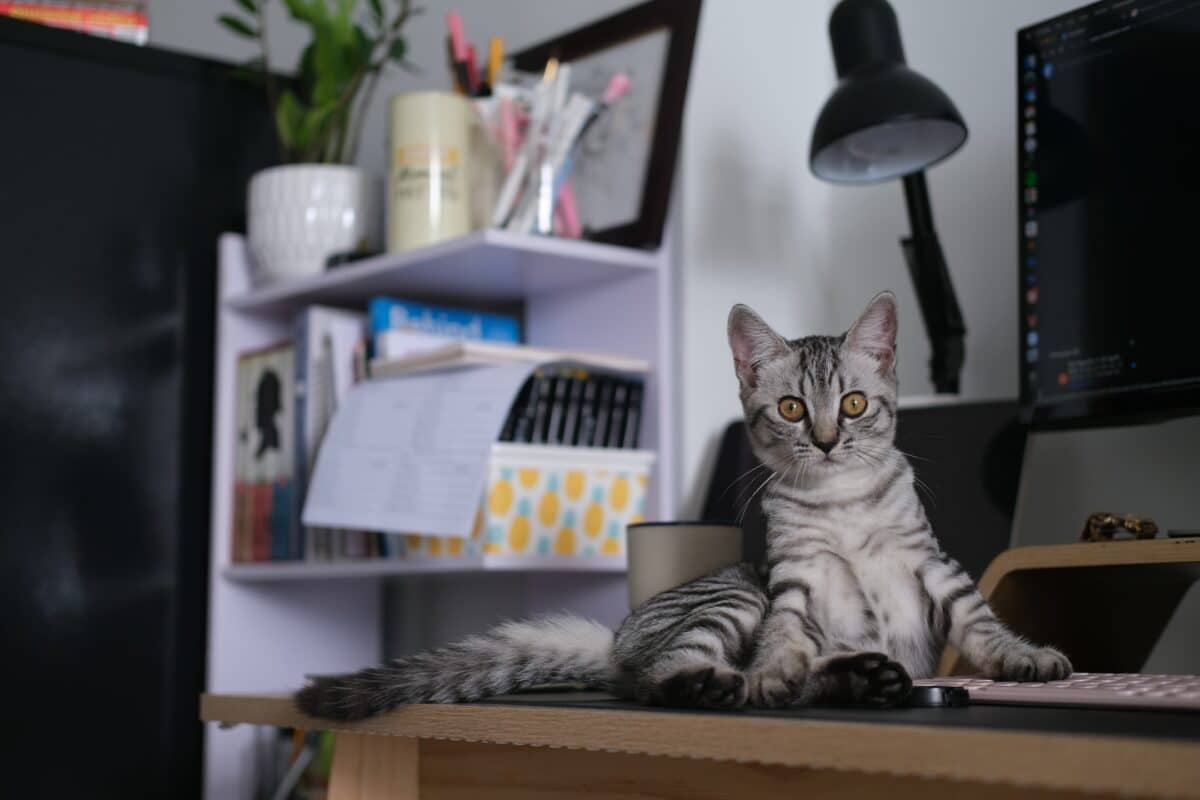
The concept that they may have “domesticated” us instead of the other way around is a playful and speculative interpretation of the cat-human relationship.
Unlike other domesticated animals, which humans intentionally tamed and bred for specific purposes, cats essentially domesticated themselves over thousands of years. They were attracted to the rodents who came to feed on the surplus grain in early agricultural settlements, and their presence was tolerated – and then encouraged – by humans due to their excellent hunting skills.
Over time, felines that were more tolerant of humans had a survival advantage and passed these traits onto their offspring. This process of natural selection ultimately led to the emergence of domestic cats.
You could humorously suggest that cats domesticated us because they chose to live in our communities, and we simply adapted to their presence. This would contrast with other animals like dogs or cows, which we domesticated for specific tasks or resources.
The claim that cats “domesticated” humans is more a comment on the unique nature of the origin of cats as they became domesticated and their independent nature rather than a scientifically accurate statement.
The journey of cat domestication
The journey of domestication began approximately 9,000 years ago in the Near East, a region that covers modern-day countries like Turkey, Iraq, and Iran. The rise of agriculture led to increased rodents attracted to stored grains. This abundance of prey enticed the wildcats of the region. They are known as Felis silvestris lybica or the African wildcat.
These wildcats were remarkably similar in size and appearance to our modern domestic cats but sported a slightly more aggressive temperament.
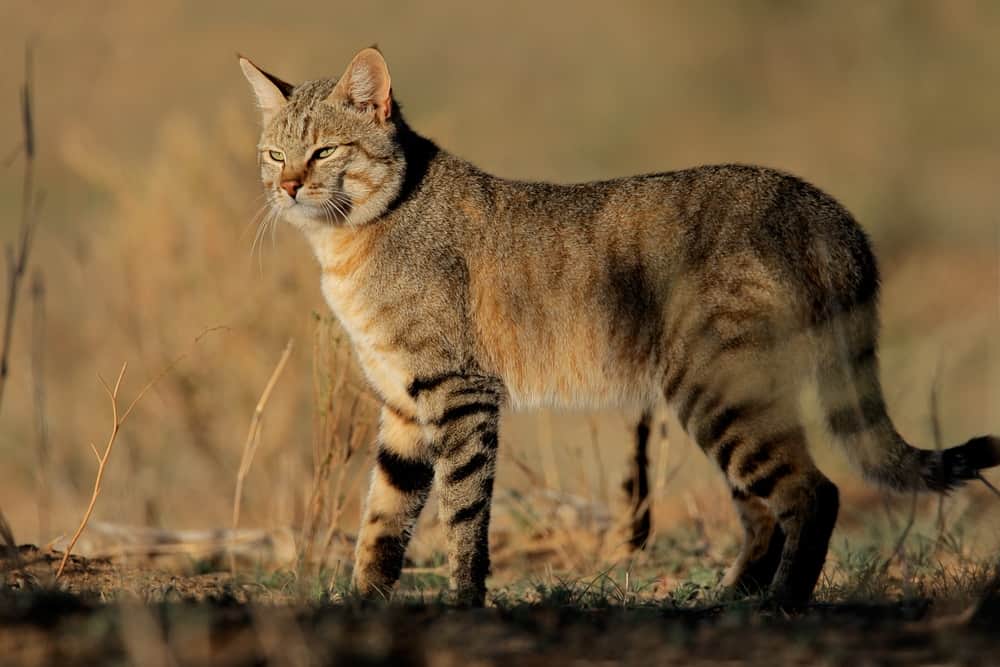
The wildcats’ prowess in hunting these pests would have greatly benefited the early farming communities. As a result, humans tolerated the presence of these wildcats, allowing them a certain proximity. Over generations, a symbiotic relationship developed between humans and cats: cats got a constant food source, and humans received a valuable pest control service.
This relationship was a form of proto-domestication, as it did not involve an active human effort to breed or tame the wildcats. Instead, cats more tolerant of humans and human settlements had a survival advantage and were more likely to pass on their genes to subsequent generations. Over thousands of years, this natural selection process resulted in wildcats that were increasingly comfortable around humans.
Click here to learn more about the different kinds of wild cats.
Evidence of early human and cat interactions
The first solid evidence of the association between humans and cats comes from Cyprus, around 7500 BC (or 9500 years ago). In 2004, archaeologists discovered the grave of a man buried alongside a cat. Since cats are not native to Cyprus, their presence on the island suggests that seafaring people must have brought them over, indicating a significant degree of interaction and connection between humans and cats.
Before this evidence, the origin of cat domestication was believed to be in Egypt 3600 years ago. However, this conflicting evidence shows that human-cat interactions occurred much earlier than originally discovered. It is possible that cats underwent two domestication processes independent of each other.
The first evidence of the early domestication of cats
However, the full domestication of cats likely did not occur until much later. This takes us back to Egypt. Artifacts from ancient Egyptian civilization, where cats were revered, provide the clearest early evidence of true domestication occurring 3600 years ago.
Cats in ancient Egypt were depicted in art and were considered sacred. Bastet, the Egyptian goddess of home, fertility, and childbirth, was often depicted as a lioness or a woman with the head of a lion or domestic cat. This reverence towards cats likely aided their full domestication process.
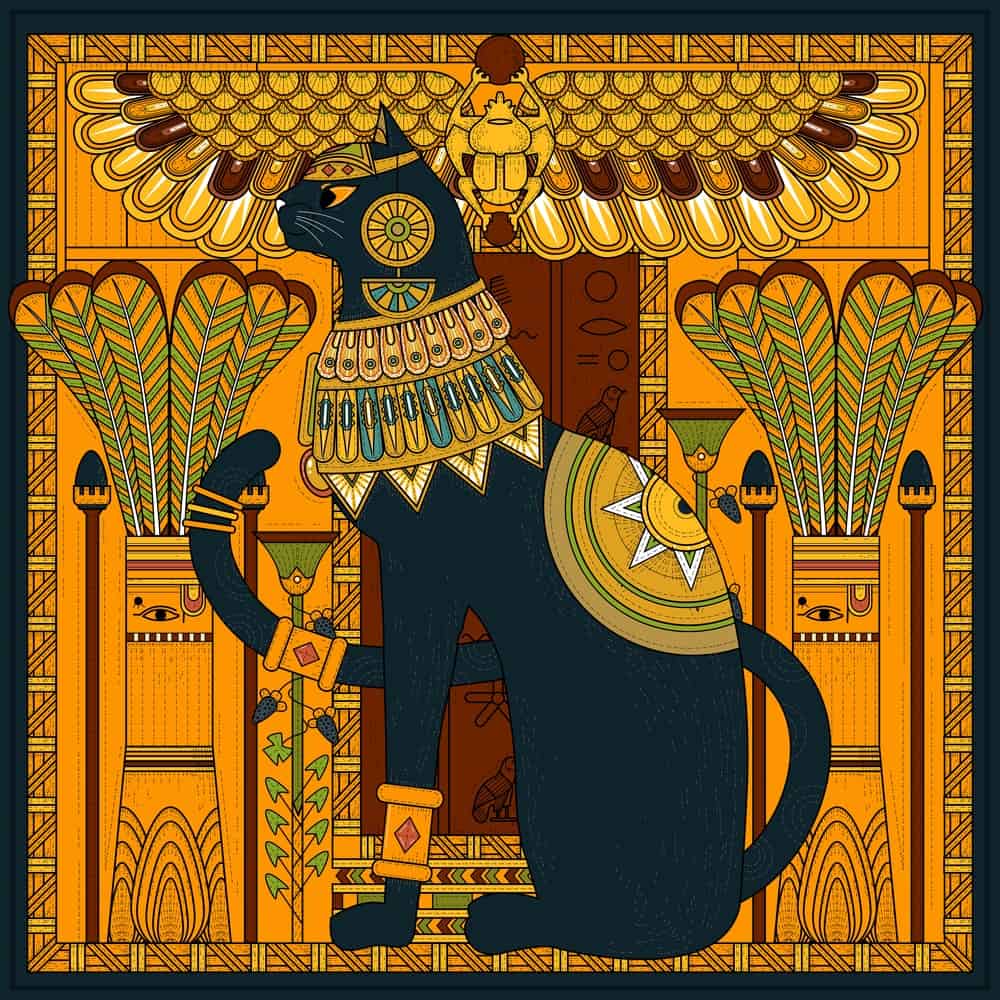
Cats in Egypt
Cats in ancient Egypt were so revered that killing a cat, even accidentally, was considered a grave crime. Egyptian families would mourn their pet cats by shaving their eyebrows, and cats were often mummified and buried with their owners. This behavior demonstrates a deep emotional bond between humans and cats, pointing towards a level of domestication comparable to our modern understanding of pet ownership.
How did cats get around the world?
As ships became a common means of commerce, cats were often taken aboard to control rodent populations. This led to the spread of domestic cats around the world. Different cultures accepted and adapted the presence of cats, gradually shaping the diverse range of domestic cat breeds we have today.
Over thousands of years, cats have gone from being tolerated visitors to cherished pets. However, even domesticated cats retain a high degree of independence and hunting instinct, reflecting their wild origins. The story of cat domestication underscores the unique relationship between humans and cats – one based on mutual benefit rather than subservience.
Comparison of the Domestic Cat and African Wildcat
| Domestic Cat (Felis Catus) | African Wildcat (Felis Silvestris Lybica) | |
| Size | Varies greatly among breeds, generally between 9.1 to 9.8 inches tall at the shoulder | Slightly larger, generally around 14 inches tall at the shoulder |
| Weight | Varies greatly among breeds, generally between 6 to 16 pounds. | Usually between 9 to 16 pounds. |
| Color | Varies significantly. Includes solid, bi-color, tri-color, and patterned. | Mostly sandy, yellow-brown to grey, with faint stripes. |
| Temperament | Generally, sociable will vary between individual cats. More likely to tolerate or seek human company. | Can adapt to their human schedule but generally still exhibit crepuscular (dawn and dusk) activity patterns. |
| Hunting | Retains hunting instincts, but skills can be less developed due to a lifestyle of relative comfort. | Highly developed hunting skills, essential for survival in the wild |
| Lifespan | Average 13-17 years, can live into their 20s | Average 12-15 years in the wild |
| Activity Cycle | Can adapt to their human schedule but generally still exhibit crepuscular (dawn and dusk) activity patterns | Mostly nocturnal but can also be crepuscular. |
Please note that these comparisons can vary. Domestic cats, in particular, show a great deal of variation in physical traits due to selective breeding. Additionally, their behaviors can be influenced significantly by their environment and upbringing.
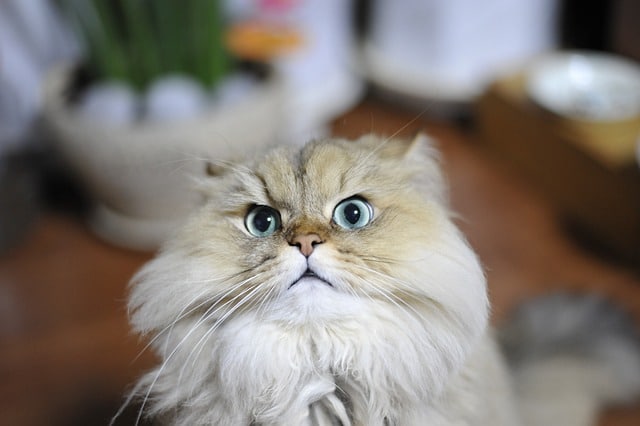
Wrapping it up
The fascinating journey of the origin of cats and their domestication tells a unique story of a mutually beneficial relationship developing over time. The fact that they still retain so many of their ancestral traits highlights the lesser influence of selective breeding by humans.
I hope you enjoyed learning more about your fury, sometimes aloof, little hunter. Click any of the following links to learn more about cats.
- Smallest Cat in the World
- Ragdoll Cat
- Sphynx Cats
- 12 Animals That Stealthily Roam Through Taylor Swift Songs
If you enjoyed learning about where cats came from, you might like reading where dogs or horses originated.
Frequently Asked Questions
The first true cats appeared about 12 million years ago.
Early cats evolved into a multitude of species to fill various ecological niches. Over millions of years, some developed traits that made them more efficient hunters and survivors in their particular environments. For example, some became more skilled climbers, while others became adept at surviving in desert climates. The Felidae family, to which all modern cats belong, evolved around 10-15 million years ago.
Cats began their association with humans when we transitioned to an agrarian society. Wildcats (Felis lybica) were attracted to early human settlements because of the surplus of rodents attracted to stored grain. Over generations, cats that were more tolerant of humans were more successful and reproduced at higher rates, eventually leading to the domesticated cats we know today. This process began around 9,000 years ago.
It’s not accurate to say that cats evolved from lions. Instead, both domestic cats and lions share a common ancestor. Over time, different lineages evolved and diversified into the various members of the Felidae family we see today, including both domestic cats and lions. The common ancestor of all Felidae (cats, lions, tigers, leopards, etc.) lived about 10.8 million years ago. Since then, these species have taken different evolutionary paths.
- The Largest Horse Ever Recorded – Sampson - February 29, 2024
- The Origin of Dogs: How Dogs Became Our Best Friends - February 27, 2024
- A Love Affair: Pets and Valentine’s Day - February 13, 2024

